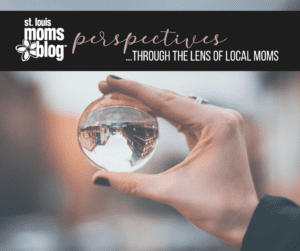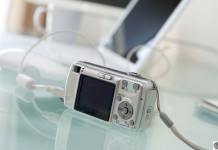 When I first shared pictures and videos of my twins exploring solids, I immediately regretted it. Many people not well-versed in baby-led weaning were quick to react, and I had my fair share of “I would never do that” comments along with the “What, exactly, is the benefit of this?” and “That seems so dangerous,” sprinkled in. Of course, I knew this was likely going to happen. I’ve had enough friends become moms before me to realize that when it comes to the controversial topics in parenting – breastfeeding or not, baby-led weaning or not, even circumcision or not – the opinionated loudly opine. This is true whether in person or online, so even though I anticipated I’d have a few comments ranging from sincerely curious to harshly critical, I didn’t expect how many people knew nothing about the logistics or rationale behind baby led weaning.
When I first shared pictures and videos of my twins exploring solids, I immediately regretted it. Many people not well-versed in baby-led weaning were quick to react, and I had my fair share of “I would never do that” comments along with the “What, exactly, is the benefit of this?” and “That seems so dangerous,” sprinkled in. Of course, I knew this was likely going to happen. I’ve had enough friends become moms before me to realize that when it comes to the controversial topics in parenting – breastfeeding or not, baby-led weaning or not, even circumcision or not – the opinionated loudly opine. This is true whether in person or online, so even though I anticipated I’d have a few comments ranging from sincerely curious to harshly critical, I didn’t expect how many people knew nothing about the logistics or rationale behind baby led weaning.
Yes, giving your baby a big, hard piece of food that might be difficult to chew or swallow sounds scary and dangerous, and the good news is: that’s not at all what baby led weaning is.
Simply put, baby led weaning (BLW) is a way to teach your baby how to self-feed using real food, cooked to soft and cut into finger-like shapes so there’s no choking hazard, once they show all signs of readiness (usually around 6 months of age). While baby led weaning, your child doesn’t rely on you to spoon-feed them pureed fruits and veggies but, instead, gets to explore food at their own pace with their own hands. The parent’s responsibility then is not to act as feeder, but to facilitate a safe environment where the child learns to feed themselves (and more).
But why then are we just hearing about this? Is it a trend that will die off like so many before it?
Likely, not.
Before the baby food makers got their hands on the American market, most people worldwide actually taught their children how to feed (and still do) using baby-led weaning. In fact, baby food wasn’t even created until the 1920s, and it wasn’t created for safety reasons. It was created for the convenience of the parents. Read more about that here.
Until my children were seven months old, they received their nutrition from breastfeeding. Then, it was their responsibility to draw milk at their own pace from the breast (this could be said of the bottle, too) and to self-regulate intake. So why then do we switch to taking that responsibility from them to spoon feed them, and then go back to self-regulation at a later time? That felt counter-intuitive to me.
Did I have anxiety about it the first time I handed them a piece of ripe avocado? Oh gosh, yes.
Did either of them choke? No. I made certain every piece of food I gave them was soft enough and skinny enough (think finger-shaped) that it couldn’t lodge itself in their throats. However, they did gag a few times and that can be scary. The key is, they’re also learning how to dislodge food if it goes down funny. So, gagging is good and helpful. The difference is very simple: if they are couching or turning red, even if they are gagging like they might vomit, they are making noise and are safe. If it’s quiet, that’s when intervention needs to happen.
My twins are now two and love their food. They eat shrimp regularly, they love quinoa and squash, and can eat an entire Honeycrisp apple by themselves without me (though my daughter has decided she doesn’t like the skin). And, yes, they also have chicken nuggets every so often and have likely eaten dirt from the floorboards of my van. Luke and Joey are also really good at self-regulating and deciding when to ask for more food, instead of eating everything on their plate just because it was offered. They don’t cringe when I give them anything new, and they really, really enjoy sitting at the table and eating together as a family.
Baby-led weaning was a great choice for my family, as it seemed to make more sense to me for their development and for our lifestyle. Obviously feeding children purees works and has been done for almost a century in our country, so you have to decide what you want to do for your family, but if you’re at all curious about baby-led weaning, I’d encourage you to do some more research on it before throwing in the towel or succumbing to fear. There are some really great benefits to this type of experience.
I’m adding additional, important information and resources below, in case you’re ready to dive in.
Readiness signs:
- Baby sits up unsupported
- Baby can hold up their head
- Baby shows an interest in food (tries to guide your lunch toward their mouth)
- Baby can accurately guide objects toward their mouth
- Baby is ready and willing to chew (mimics gnawing or chewing movement)
Excellent BLW resources:
The Baby Led Weaning Cookbook by Gill Rapley
Side note: There is a larger, more thorough book by the same author entitled Baby Led Weaning. However, the first four chapters of the cookbook cover all of the information in the larger book in a more concise way and the book also contains excellent recipes, so you can start with something tried and true if you’re nervous to cook food for baby on your own at the start.
Quick Tips:
- Get a highchair that’s easy to clean and consider putting something down on the floor because it can get very, very messy. Don’t overthink what to give them or worry too much, unless they have food allergies. One of the benefits of baby-led weaning is that baby eats what you eat. The only difference is, you have to cut their food to make sure there is no choking hazard.
- Take advantage of Pinterest. There are so many great recipes and visuals on how to cut certain foods.
I know it can still be scary. I was a bit nervous the first week we did this, but it wasn’t long after their first meal that I saw them really begin to understand how to thoroughly chew their foods. So, give them time and give yourself grace. You really do have this, even if it feels a bit frightening.











Thank you so much. I’ve been interested in baby led weaning for a while. You explained it so well. The concept makes so much sense. I’m hoping I will be able to implement it with the next baby that comes to be with us for a while.
I’m so glad you found this helpful. Just like with anything else there is definitely a learning curve, but I think it only took about a week for me to feel comfortable with our new processes/routine.
Comments are closed.